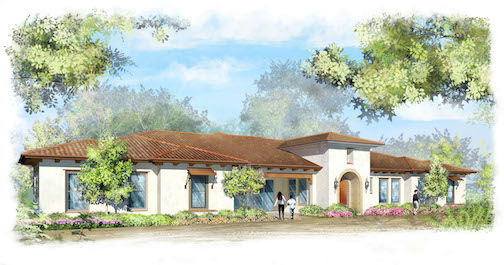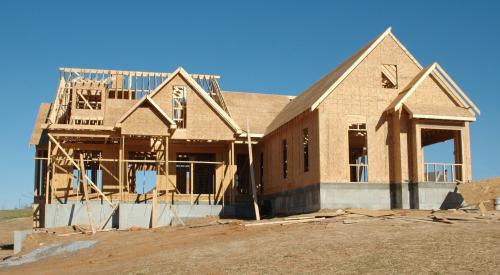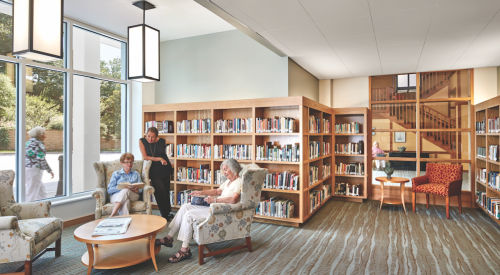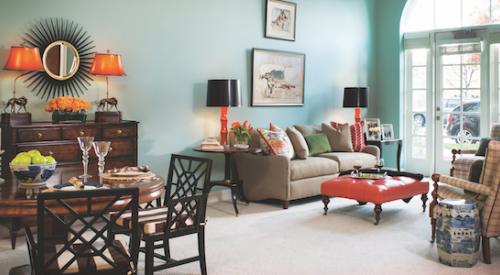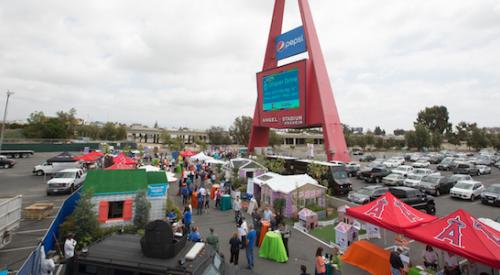Brookfield Residential of Costa Mesa, Calif., and HomeAid San Diego have teamed up to build two of the first memory-care homes in California, designed specifically to serve adults with developmental and age-related disabilities. The homes are located on the site of Noah Homes, a nonprofit supporting adults with developmental disabilities, in Spring Valley (east San Diego).
The Brookfield/HomeAid partnership was named the Association of Fundraising Professionals (AFP) San Diego Chapter’s 2016 Outstanding Philanthropic Corporation. The two organizations and more than 62 building partners have generated in excess of $1.5 million in donated professional services, labor and materials as part of the Noah Homes capital campaign.
The two 5,000-square-foot homes were designed by Dahlin Group Architecture/Planning of Pleasanton, Calif., in conjunction with the UC San Diego Down Syndrome Center for Research and Treatment. Each home will accommodate 10 individuals and include features that will maximize resident comfort, including motion sensors and infinity pathways that do not terminate in a 90-degree directional change, allowing a safe path of travel. They will also offer state-of-the-art technology meeting California’s Title 24 energy-efficiency standards, including silent alarms and other medical features hidden from sight to ensure that the residences feel like homes rather than medical facilities.
At press time, both homes were under construction and are scheduled to open in late 2016.
For additional perspective, DI reached out to Adrian Foley, president and COO of Brookfield Residential California; Colin Koch, operations coordinator for Brookfield Residential Southern California; Alexis Parker, executive director of HomeAid San Diego; and Molly Nocon, CEO of Noah Homes.
[DI]
What makes this project meaningful for you as housing providers and for the community as a whole?
[NOCON]
Age-related illnesses like dementia and Alzheimer’s have only recently affected the population of adults with development disabilities. Currently there are an estimated 800 San Diegans in need of this type of care. They say it takes a village, and with Brookfield and HomeAid, we have been able to accomplish the impossible as a nonprofit: building two innovative homes for a population in need, without incurring any debt.
[FOLEY]
We’re always looking for ways to give back to the community and we are proud of the work we’re doing to make sure people with developmental disabilities have homes that accommodate their special needs. This effort is helping phenomenal individuals to get the daily care they need to live full lives.
[PARKER]
Our leading effort is to bring together building professionals with social-service agencies to build needed facilities at a significantly reduced cost. The power of this collaborative building model has come alive on the Noah Homes campus, and we couldn’t be more proud of the project and people behind it.
[DI]
Can you give me a few examples of the features that are compliant with Title 24?
[FOLEY]
The homes have high-efficiency LED fixtures inside and out; R-19 walls and R-30 roof/attic insulation and radiant barriers; solar energy; low U-factor, double-tinted Milgard windows and insulated exterior doors; high-efficiency tankless water heaters; SolaTube natural lighting; Energy Star appliances; LPG-fueled appliances; and a split HVAC system with a two-stage compressor, variable-speed motor, and Infinity Controller.
The project also features drought-tolerant landscaping with low-voltage lighting and a low-flow, drip irrigation system with self-sufficient well water that will not impact county water usage. Four efficient and elaborate bio-retention water basins, or swales, are integrated into the landscape design to capture and filter rainwater runoff.
[DI]
How are the homes designed to give residents a sense of autonomy and safety?
[KOCH]
There are single- and double-occupancy rooms with dedicated bathrooms, where each individual has a personal desk space, closet, room fan, independent lighting, and other amenities. Outside of each room entry is a memory box, a built-in glass cabinet where residents can store personal memoirs and items of significance.
All common areas are extremely spacious with high ceilings and ample seating. NanaWall glass doors opening to California Rooms provide the opportunity for residents to experience indoor/outdoor living. One of the homes has a second NanaWall system that opens to a trellised patio area.
Click here for more information about the Noah Homes Memory Care project or to support the Memory Care fundraiser.
